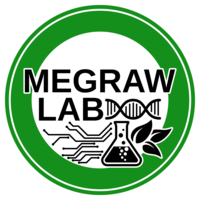| Title | The Next Generation of Training for Arabidopsis Researchers: Bioinformatics and Quantitative Biology |
| Publication Type | Journal Article |
| Year of Publication | 2017 |
| Authors | Friesner, J, Assmann, SM, Bastow, R, Bailey-Serres, J, Beynon, J, Brendel, V, C. Buell, R, Bucksch, A, Busch, W, Demura, T, Dinneny, JR, Doherty, CJ, Eveland, AL, Falter-Braun, P, Gehan, MA, Gonzales, M, Grotewold, E, Gutierrez, R, Kramer, U, Krouk, G, Ma, S, Markelz, RJCody, Megraw, M, Meyers, BC, Murray, JAH, Provart, NJ, Rhee, S, Smith, R, Spalding, EP, Taylor, C, Teal, TK, Tor, ii, KU, Town, C, Vaughn, M, Vierstra, R, Ware, D, Wilkins, O, Williams, C, Brady, SM |
| Journal | Plant Physiology |
| Volume | 175 |
| Pagination | 1499-1509 |
| Date Published | 12/2017 |
| Abstract | It has been more than 50 years since Arabidopsis (Arabidopsis thaliana) was first introduced as a model organism to understand basic processes in plant biology. A well-organized scientific community has used this small reference plant species to make numerous fundamental plant biology discoveries (Provart et al., 2016). Due to an extremely well-annotated genome and advances in high-throughput sequencing, our understanding of this organism and other plant species has become even more intricate and complex. Computational resources, including CyVerse,3 Araport,4 The Arabidopsis Information Resource (TAIR),5 and BAR,6 have further facilitated novel findings with just the click of a mouse. As we move toward understanding biological systems, Arabidopsis researchers will need to use more quantitative and computational approaches to extract novel biological findings from these data. Here, we discuss guidelines, skill sets, and core competencies that should be considered when developing curricula or training undergraduate or graduate students, postdoctoral researchers, and faculty. A selected case study provides more specificity as to the concrete issues plant biologists face and how best to address such challenges. |
| URL | http://www.plantphysiol.org/content/175/4/1499 |
pmid:

